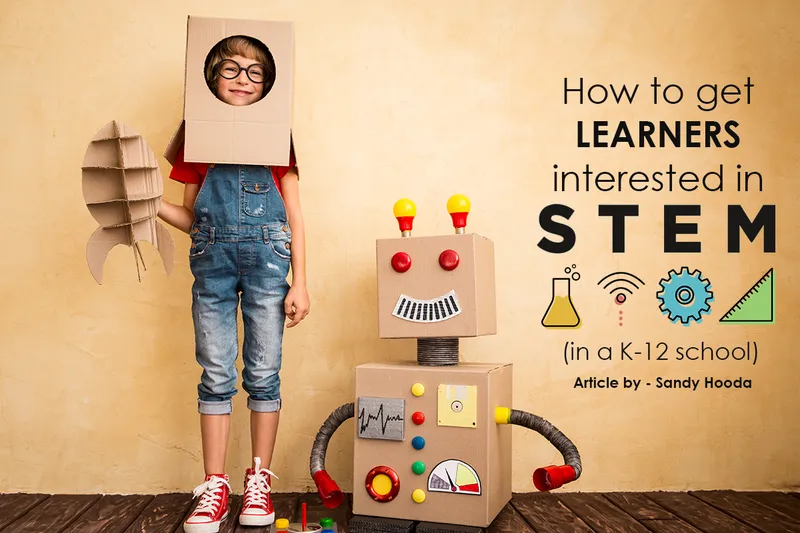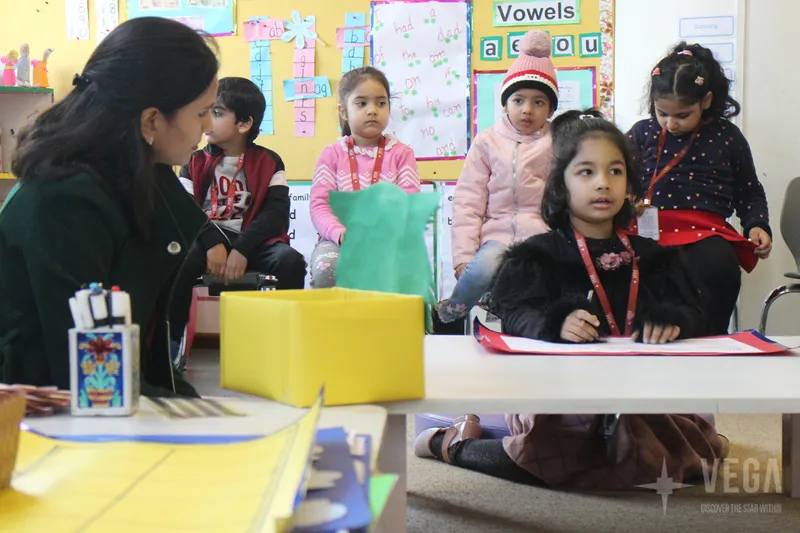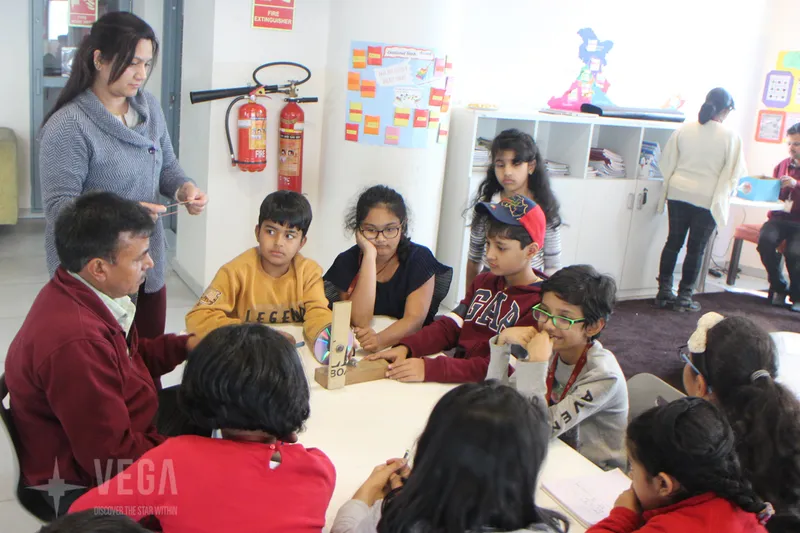

How to get learners interested in STEM (in a K-12 school)?

Of late there has been an increase in the emphasis on STEM (Science, Technology, Engineering and Mathematics) learning at the school level. Traditionally these subjects, as a group, were not considered to be mainstream subjects. Teaching and learning of STEM was confined largely to high school students.
The surge in the push for STEM learning at the school level can be attributed to the rise in the global demand for STEM jobs and careers. According to a report published by CNN, the demand for STEM jobs worldwide is 1.7 times higher than for non-STEM jobs, and there are not enough candidates to fill these new jobs.
STEM will play a crucial role in all future careers. With the rapid growth in technology and digitisation, STEM has become mandatory just akin to reading, writing and basic arithmetic. Research suggests that introducing engineering-related subjects right from the elementary level lead to several benefits, including nurturing critical 21st-century skills and determining career success.
Let us explore some best practices and strategies on how educators can inspire learners of various ages. Right from kindergarten and all the way to high school, let us explore some best practices for STEM learning.
Kindergarten:

At this age, children are highly curious. Instead of making them memorise science definitions and formulae, we can tap into their innate curiosity with hands-on application-based STEM learning. Simple experiments and STEM-based games can help in igniting scientific curiosity and interest.
Here are some activities to help children get excited with STEM learning:
- Building a small birdhouse in the yard so that children can observe habitats and feeding habits of birds up close
- Constructing a simple lego based wind turbine that powers a small bulb so children can see wind energy in action
Primary School:

This is the age when learners acquire basic reading, writing and arithmetic skills. Instead of approaching STEM as a stand-alone subject, educators can integrate it with other subjects.
An example of true multidisciplinary learning incorporating STEM: Using the timeless classic Around the World in Eighty Days by Jules Verne, educators can design a STEM curriculum. By exploring the scientific achievements of that era and comparing them with the present-day technologies, educators can ignite learners’ interest as well as help them to contrast scientific advancements over time. As a next step, the inspired learners could come up with real world STEM projects that can potentially solve a real world present day problem.
Learners can also be made interested in STEM by introducing coding and robotics. The LEGO Education and LEGO Mindstorm series are also effective ways to impart applied STEM learning.
Middle School:

Learners can be asked to work in groups or individually on advanced projects that interest them and are also a part of their grade level curriculum. The focus at this stage needs to be on helping learners to apply the knowledge they have gained in their STEM lessons. Application needs to go beyond theory and can be about finding new and better ways of doing things. Micro-innovations need to be encouraged so that children develop and nurture original thinking.
Exhibitions of learning are powerful ways for learners to demonstrate their STEM products and projects. Parents and real world experts can be invited to these exhibitions to assess and critique the work of the learners.
High School:

This is a great time to encourage learners to nurture expertise and specialisation in the STEM skills of their choice so that they can develop them into fruitful careers. STEM internships can be very powerful and useful. Educators and schools should provide learners with opportunities to intern at leading technology companies so that they can make the connections between their classroom knowledge and real-world applications. These internships would also add value to the resumes of the learners, helping them build their professional network.
Bottom Line
Not all children love STEM. It is natural for some children to possess a talent or to develop an interest in arts and liberal arts. Therefore it is for the educator to identify the interests (and talents) of learners and to guide them in the right direction. For all the learners who show a natural inclination for STEM, it is the responsibility of the school to nurture and to develop their interests and to finally connect them with fruitful careers.




.jpg?mode=crop&crop=faces&ar=1%3A1&format=auto&w=1920&q=75)
